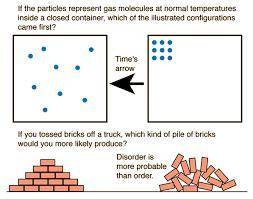
Physics, 02.12.2020 16:20 cocodemain
Consider a star that is a sphere with a radius of 6.32 108 m and an average surface temperature of 5350 K. Determine the amount by which the star's thermal radiation increases the entropy of the entire universe each second. Assume that the star is a perfect blackbody, and that the average temperature of the rest of the universe is 2.73 K. Do not consider the thermal radiation absorbed by the star from the rest of the universe. J/K

Answers: 1


Other questions on the subject: Physics

Physics, 21.06.2019 23:20, pineapplepizaaaaa
Acharge of 8.4x10^-4 c moves at an angle of 35 degrees to a magnetic field that has a field strength of 6.7x10^-3 t. if the magnetic force is 3.5 x10 ^-2 n, how fast is the charge moving?
Answers: 1

Physics, 22.06.2019 12:00, jazz8224
The sun’s mass is 2.0×10^ 30 kg, its radius is 7.0×10 5 km, and it has a rotational period of approximately 28 days. if the sun should collapse into a white dwarf of radius 3.5×10 3 km, what would its period be if no mass were ejected and a sphere of uniform density can model the sun both before and after?
Answers: 3

Physics, 22.06.2019 21:00, emilyrobles
Which of the following statements comparing electron microscopy and light microscopy is false? which of the following statements comparing electron microscopy and light microscopy is false? both the electron microscope and the light microscope use the same wavelengths for illumination. images produced by light microscopes can be in color, whereas electron microscope images are black and white unless they are artificially colored. the electron microscope has greater resolution than the light microscope. electron microscopes can allow examination of viruses and internal cell structures, whereas light microscopes are limited to objects that are 0.5 micrometers and larger. request answer
Answers: 2

Physics, 22.06.2019 21:40, Unicorn66y
Wo small variable-thrust jets are actuated to keep the spacecraft angular velocity about the z-axis constant at ? 0 = 1.16 rad/s as the two telescoping booms are extended from r1 = 1.18 m to r2 = 4.69 m at a constant rate over a period of 124 seconds. the small 19-kg experiment modules at the ends of the booms may be treated as particles, and the mass of the rigid booms is negligible. determine the necessary thrust t for each jet as a function of time where t = 0 is the time when the telescoping action is begun. after you have the general expression for t, answer the questions. show work.
Answers: 1
You know the right answer?
Consider a star that is a sphere with a radius of 6.32 108 m and an average surface temperature of 5...
Questions in other subjects:

History, 11.05.2021 20:30


English, 11.05.2021 20:30


English, 11.05.2021 20:30

Chemistry, 11.05.2021 20:30


Mathematics, 11.05.2021 20:30

Mathematics, 11.05.2021 20:30

Mathematics, 11.05.2021 20:30






 is the entropy of the rest of the universe which is mathematically represented as
is the entropy of the rest of the universe which is mathematically represented as 

 is the Stefan-Boltzmann constant with value
is the Stefan-Boltzmann constant with value 




 is the entropy of the rest of the universe which is mathematically represented as
is the entropy of the rest of the universe which is mathematically represented as 






